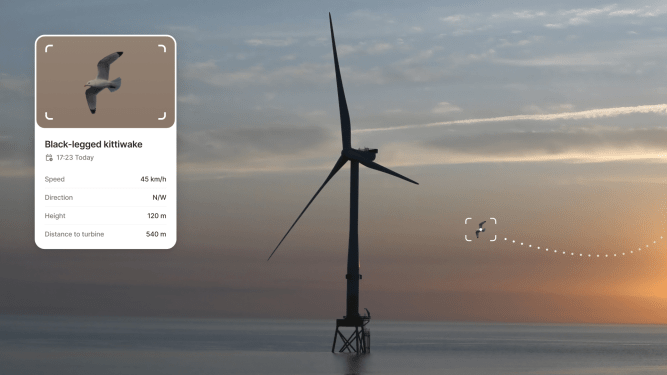Bird-Saving Technology Uses Artificial Intelligence to Mitigate Wind Turbine Threats
The Environmental Cost of Wind Farms and the Rise of Spoor, a Startup Using AI to Mitigate Bird Collisions
Wind Energy: The Largest Source of Renewable Energy in the U.S.
According to the U.S. Energy Information Administration, wind is the largest source of renewable energy in the United States. However, wind farms come with an environmental cost as wind turbines can wreak havoc on bird populations.
Meet Spoor, a Startup Using AI to Help Wind Farms Mitigate Bird Collisions
Spoor is a software that uses machine learning to detect birds on video while also recording their movement and predicting their flight patterns. The startup’s co-founder and CEO, Ask Helseth, told TechCrunch that government regulations in several countries require wind farms to monitor and track their impacts on birds, especially in areas with endangered species.
The Problem of Bird Collisions
Prior to AI-enabled computer vision, there wasn’t a good way for wind farms to monitor bird populations. "The expectations from the regulators are growing but the industry doesn’t have a great tool," Helseth said. "A lot of people [go out] in the field with binoculars and trained dogs to find out how many birds are colliding with the turbines."
Spoor’s Solution
Spoor’s system of continuously monitoring sites offers a large improvement, according to Helseth. Existing wind farms can use the data to better react to bird migration patterns and can slow or even stop wind turbines when avian activity is expected to be heightened.
Companies can also use the tech to monitor potential sites for wind farms and evaluate their risk to local avian populations. "Wind farms are quite huge, many hundred square kilometers, and trying to use computer vision to basically monitor the air is an interesting technology challenge," Helseth said.
The Challenge of Scaling
"We needed to create a scalable technology that can detect birds," Helseth said. "It’s kind of a novel use of computer vision and our own data pipeline." The Oslo, Norway-based company just raised a $4 million seed round from investors including Futurum Ventures, Nysnø, and biodiversity-focused VC Superorganism.
Expansion into the U.S.
The company has its eye set on expanding into the United States, which should be a windfall of its own. The U.S. government has an aggressive goal of reaching 30 gigawatts of offshore wind capacity by 2030, offering a strong opportunity for companies like Spoor.
Regulations and Compliance
Any company that wants to set up a wind farm in the United States has to comply with guidelines from the U.S. Fish and Wildlife Service and make sure that their wind farms don’t violate legislation like the Endangered Species Act or the Migratory Bird Treaty Act. Regulators are particularly strict in the United States about bird collisions, and Spoor’s technology can help wind farms meet these regulations.
Competition and Future Developments
Spoor is not the only company working on AI-powered bird detection. Other companies like Veracity Dynamics and Bird-Vision are also developing similar technologies. However, Spoor has a unique advantage with its scalable technology and experienced team.
The future of wind energy looks bright, but it’s essential to mitigate the environmental cost of wind farms. Spoor is leading the charge in AI-powered bird detection, and its expansion into the United States will be closely watched by investors and industry experts alike.
Related Topics
- Wind Energy: The largest source of renewable energy in the United States.
- Bird Collisions: A significant environmental concern for wind farms.
- Spoor’s Solution: AI-powered bird detection technology.
- Expansion into the U.S.: Spoor’s plans to expand its business into the United States.
- Regulations and Compliance: The importance of complying with regulations in the wind energy industry.
Sources
- U.S. Energy Information Administration: Wind is the largest source of renewable energy in the United States.
- Spoor: A software that uses machine learning to detect birds on video while also recording their movement and predicting their flight patterns.
- TechCrunch: An interview with Spoor’s co-founder and CEO, Ask Helseth.



